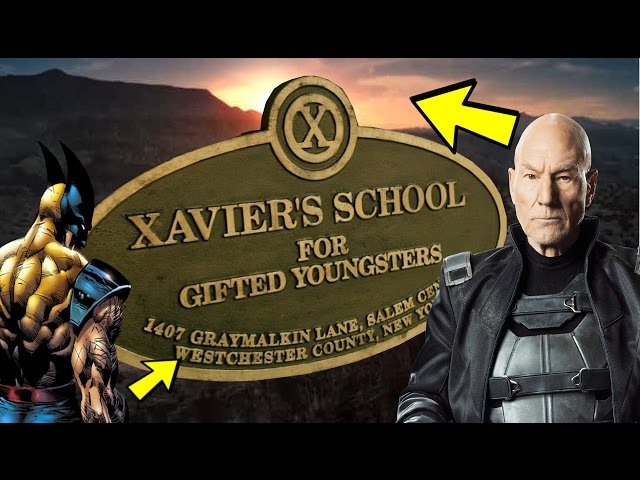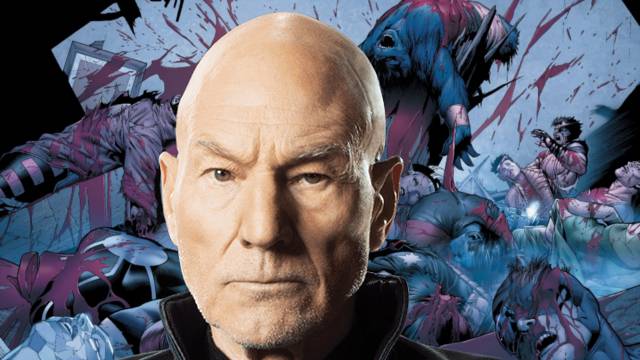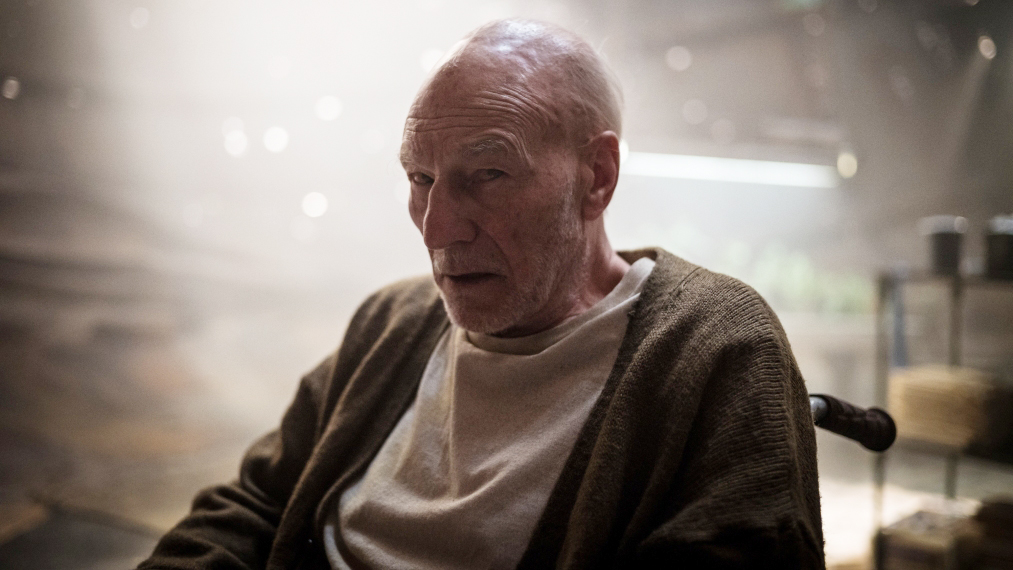Why Logan Choice in Leaving Out the Westchester Incident
Logan, released in 2017, stands as a landmark entry in the X-Men cinematic universe, distinguished by its poignant narrative and bold storytelling choices. Among these choices, the decision to reference rather than depict the Westchester Incident, a cataclysmic event within X-Men lore, emerged as a focal point of discussion among fans and critics alike. Director James Mangold’s deliberate omission of this shocking event from the film’s visuals underscores a strategic narrative decision that profoundly impacted the film’s thematic resonance.
The Westchester Incident, a harrowing event resulting in the demise of most X-Men members, looms large over Logan’s narrative landscape. However, instead of opting for a visual depiction of this tragedy, Mangold chose to allude to it through dialogue and character interactions. This deliberate choice refrained from sensationalizing the event, allowing its gravity to permeate the film’s atmosphere without overshadowing the central character arcs.
By withholding explicit visuals of the Westchester Incident, Logan prioritized character-driven storytelling over spectacle. This decision served to deepen the emotional stakes of the narrative, focusing on the internal struggles of its protagonists rather than relying solely on external conflicts. Mangold’s approach underscores a commitment to crafting a more introspective and thematically rich superhero film, diverging from conventional genre tropes.
This article aims to dissect the significance of Logan’s handling of the Westchester Incident and elucidate why this narrative approach was the most effective choice for the film. Through an exploration of the thematic implications, character dynamics, and audience reception, we will delve into the nuanced storytelling decisions that elevated Logan to its status as a standout entry in the X-Men franchise.
| Aspect | Description |
|---|---|
| Narrative Choice | The film chose to reference rather than depict the Westchester Incident, focusing on its implications through dialogue and character reactions rather than visual representation. |
| Effect on Story | This approach allowed the film to maintain a character-driven narrative, emphasizing emotional depth and internal conflicts over external spectacles. |
| Thematic Impact | By avoiding sensationalism, the film deepens its thematic resonance, offering a more introspective look at its characters and diverging from typical superhero genre tropes. |
Contents
Setting the Stage Logan’s Dark Narrative
Logan, positioned as Hugh Jackman’s swan song in the role of Wolverine, plunges audiences into a bleak and desolate future where mutants are on the brink of extinction. This dystopian setting serves as the backdrop for a narrative that eschews the bombast and grandeur often associated with superhero films in favor of a more introspective and somber exploration of its characters.

At the heart of Logan’s narrative lies the enigmatic absence of the X-Men, a once-proud team of superheroes now reduced to mere memories. The film hints at a cataclysmic event known as the Westchester Incident, which serves as the catalyst for the dissolution of the X-Men and the subsequent isolation of its surviving members. This event, shrouded in mystery and tragedy, looms over the narrative like a dark cloud, driving the actions and motivations of its protagonists.
| Element | Description |
|---|---|
| Setting | A bleak and desolate future where mutants are nearly extinct, setting a somber tone that diverges from typical superhero film grandeur. |
| Role of the Westchester Incident | The incident, which remains largely unexplained but deeply impactful, serves as a catalyst for the dissolution of the X-Men and shapes the somber mood and motivations of the surviving characters. |
| Narrative Focus | The film focuses on a more introspective exploration of its characters, particularly Logan, emphasizing the personal and emotional impacts of the events over spectacle. |
The Westchester Incident Unseen but Reverberating
Director James Mangold faced a pivotal decision in how to address the Westchester Incident within the confines of Logan’s narrative. Initially, there was contemplation of depicting the event in a visceral and gut-wrenching manner, potentially opening the film with a harrowing portrayal of the X-Men’s demise. However, Mangold ultimately opted against this approach, recognizing the potential pitfalls of such a decision.
One of the primary concerns was the risk of the Westchester Incident overshadowing the character-driven narrative at the heart of Logan. By placing too much emphasis on the spectacle of the event, there was a danger of detracting from the film’s central focus: the internal struggles and redemption of its titular character, Logan. Mangold understood the importance of maintaining a delicate balance between world-building and character development, ultimately choosing to prioritize the latter.

Instead of succumbing to the temptation of a bombastic opening sequence, Mangold opted for a more subdued approach, allowing the full weight of the Westchester Incident to unfold gradually through dialogue and subtle narrative cues. This decision not only preserved the integrity of Logan’s character arc but also lent greater emotional resonance to the revelation of the event’s aftermath. By withholding explicit visuals of the incident, Mangold invited audiences to engage more deeply with the characters’ internal conflicts and moral dilemmas, fostering a more immersive and thought-provoking viewing experience.
In doing so, Logan transcended the confines of the traditional superhero genre, emerging as a poignant and introspective meditation on mortality, redemption, and the enduring legacy of heroes. Mangold’s deft handling of the Westchester Incident serves as a testament to his mastery of storytelling, reaffirming Logan’s status as a cinematic masterpiece that defies convention and resonates on a profound emotional level.
| Decision Factor | Impact on Film |
|---|---|
| Avoiding a visceral depiction | Chose not to start the film with the graphic demise of the X-Men, avoiding a tone that could overshadow Logan’s personal journey. |
| Focus on character-driven narrative | By not focusing on the spectacle of the Westchester Incident, the film maintains its focus on Logan’s internal struggles and redemption, enhancing the depth of his character development. |
| Subtle narrative integration | The incident is gradually revealed through dialogue and subtle cues, enhancing the emotional impact and allowing audiences to engage deeply with the characters’ moral dilemmas. |
| Preservation of thematic depth | This approach helps Logan transcend typical superhero genre tropes, offering a meditation on themes like mortality, redemption, and legacy, thus reinforcing its status as a standout cinematic work. |
Crafting Logan’s Opening Character Focus
In a departure from the bombastic openings typical of superhero films, Logan opts for a subdued and introspective introduction. Director James Mangold deliberately eschews flashy action sequences in favor of a character-driven narrative that delves deep into the psyche of its protagonists. This emphasis on character development sets Logan apart from its counterparts in the genre, offering audiences a more intimate and emotionally resonant viewing experience.
By centering the film’s opening on the titular character, Logan, and the ailing Professor X, Mangold establishes a strong emotional connection with the audience from the outset. Instead of focusing on grandiose displays of power or elaborate fight scenes, the film immerses viewers in the quiet desperation of its protagonists as they navigate a world ravaged by loss and despair. This emphasis on the human element of the story underscores the film’s underlying themes of mortality, redemption, and the enduring bonds of friendship.
| Narrative Element | Description |
|---|---|
| Introduction Style | A subdued and introspective start, avoiding bombastic action sequences to focus on character development and emotional depth. |
| Focus on Characters | The film centers on Logan and the ailing Professor X, establishing their struggles in a world filled with loss and despair, rather than showcasing their powers in action-packed scenes. |
| Emotional Connection | By emphasizing the human aspects and vulnerabilities of the protagonists, the film creates a strong emotional bond with the audience, enhancing the impact of its themes. |
| Underlying Themes | Highlights themes of mortality, redemption, and friendship, which are explored through the personal experiences of the characters rather than through external conflicts. |
Impact and Reception
Logan’s unconventional approach to handling the Westchester Incident garnered widespread acclaim from both audiences and critics alike. By choosing to leave the incident unseen, Mangold succeeded in cultivating a sense of dread and foreboding that permeates the film’s atmosphere. The absence of explicit visuals allows the audience’s imagination to fill in the gaps, resulting in a more visceral and haunting depiction of the event’s aftermath.
Furthermore, Logan’s emphasis on character-driven storytelling over spectacle proved to be a winning formula, resonating with viewers on a deeper emotional level. The film’s success at the box office and numerous accolades underscore the effectiveness of prioritizing nuanced character arcs and interpersonal relationships over flashy special effects and action sequences. In an era dominated by CGI-laden blockbusters, Logan stands as a testament to the enduring power of storytelling and the timeless appeal of well-developed characters.

In conclusion, Logan’s decision to prioritize character focus and introspection over spectacle and bombast pays dividends, resulting in a film that transcends the confines of its genre. By crafting a narrative that delves into the emotional complexities of its protagonists, director James Mangold delivers a cinematic experience that is as thought-provoking as it is entertaining. As the final chapter in Hugh Jackman’s iconic portrayal of Wolverine, Logan cements its place as a modern classic in the pantheon of superhero cinema.
| Aspect | Description |
|---|---|
| Handling of the Westchester Incident | The decision to leave the Westchester Incident unseen cultivated a sense of dread and allowed the audience’s imagination to enhance the perception of the event’s severity and impact. |
| Narrative Focus | Prioritizes character-driven storytelling, focusing on the deep emotional complexities of Logan and other characters over traditional superhero spectacle. |
| Audience and Critical Reception | Received widespread acclaim for its fresh approach, resonating deeply with audiences and critics, leading to strong box office performance and multiple accolades. |
| Impact on Superhero Cinema | Demonstrated the effectiveness of a more subdued, character-focused approach in a genre typically dominated by CGI and action sequences, standing out as a testament to the power of storytelling. |
| Legacy of the Film | As Hugh Jackman’s final performance as Wolverine, it serves as a poignant and memorable conclusion, solidifying its status as a modern classic in superhero cinema. |
Logan’s decision to leave out the visual depiction of the Westchester Incident was a calculated move that paid off. By focusing on character development and maintaining a sense of mystery, the film delivers a powerful and emotionally resonant experience. James Mangold’s directorial choice underscores the importance of storytelling depth in the superhero genre, solidifying Logan’s place as one of the most memorable entries in the X-Men franchise.
Global News -The Truman Doctrine Shaping U.S. Foreign Policy in 1947
Ahead of NFL Draft Denver Broncos New Uniforms Leaked
Basketball Stars Paige Bueckers and Kamilla Cardoso
Uniform Unveiling amidst Dallas Cowboys Trade Rumors
Kenley Pope Rising Star in Competitive Cheerleading
Duane Allman Death The Tragic Loss of a Guitar Legend
RCMP Probes in Bass River Sudden Death, Nova Scotia